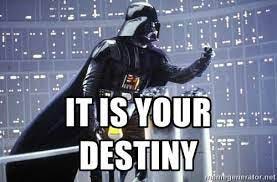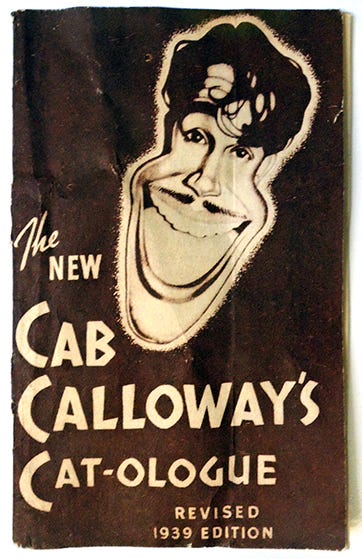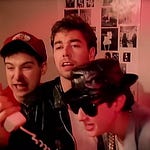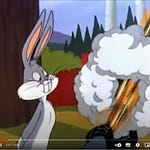Fun fact: I don't jog for exercise, it's so I can listen to podcasts. I love them. I’m also one of those people who grew up making pretend radio shows with a microphone into the family cassette recorder. I even had a radio show on community radio station Radio Northern Beaches with my friend Colin Klupiec back in the day.
So, when I saw the “podcast” button on Substack, I couldn’t help myself. My Mum listened to episode 1 and said:
“something you always said you would like to do when you heard journos when you were young”.
Yes, Mum! This is so cool!
I hope you’ll try the podcast on your commute, run, gym session, etc. It’s also a great companion (IMHO) to enhance the experience as you read the newsletter. You can listen here on Substack or, if you prefer, Apple Podcasts & Spotify.
When Pete and I launched our Gig Based Learning website a while back, we decided to include a blog so we could keep everyone up to date with our adventures. Of all the topics I could have chosen to write about, I chose to begin by featuring the work of my favourite and most influential music education thinkers. I call them “The Cats of Music Education”. Interestingly, I never wrote about why I made the choice to start there, but now they’re available here on Substack, it seems like a great time to bring you behind the scenes.
Backstory
Pete and I love to share blues and jazz culture with our students and we pepper our conversations in class with language from the “Jive” lexicon used and popularised by blues and jazz musicians in a golden age of Jive from the 1920s and peaking with Cab Calloway’s Cab Calloway’s Cat-ologue: a Hepster’s Dictionary. This language (and vibe) spread through the Beatniks to the Hippies and its influence remains through Rock ‘n’ Roll and Hip hop. Opening up this world is another way we aim to “welcome” our students into the “tradition” of being a musician. Indeed, the very name of this operation is - GIG Based Learning - Gig from the “argot of jazz musicians”. This reflects our intention to develop an approach to classroom music education that evolves out of, not just from how musicians learn, but also what we do, and who we are - how musicians are in the world.
The Cats
A “cat” according to the Hepster’s Dictionary circa 1939 was a “musician in a swing band”. Over the years, it’s become “a sign of respect” to call a musician a cat. I remember my hero Jaco Pastorius using it this way once when he was complimented on his work as a musical innovator. He responded with “I’m just jamming with the Cats”. So, in that spirit, Pete and I introduced a musicological element into our Year 7 program called “The Cats of Music” to help students to discover the cats (style/genre agnostic). Again, this is about remembering that we’re part of a very long line, a tradition, of musicians wh o have so much to offer - we just have to listen. We love it when a 12 year old makes a connection to a past master and says something like “That [performer/composer/etc] was a heavy cat”.
The Cats of Music Education
Thus, The Cats of Music were the inspiration for our first blog series which we’ve recently brought across to Substack - “The Cats of Music Education”.
The series is also informed by my experience as a classroom music teacher. I did so much work in isolation before I had my intellectual awakening around 2010. I thought I had to solve all of my problems and fight my battles alone. But, when I started to discover the music education literature from around 2010, it blew my mind! Why didn’t anybody tell me about these people?! They’ve already thought about all of the things I’m thinking about. Woah!
Marilyn Cochran-Smith explains that I was experiencing “historical amnesia” (2003, p. 278) and that:
Like many areas in education, teacher education is often plagued by the lack of historical perspectives on present issues. Currently, teacher education is troubled by historical amnesia about conceptualizing teaching as a technical activity and, accordingly, conceptualizing teacher preparation as a training problem. (p. 278)
By highlighting the Cats of Music Education, I’m answering a call from education philosopher Nel Noddings (2018). She asserts that each generation must examine the responses of previous generations to the key philosophical questions at the core of school-based education in order to choose what to retain and what to reimagine as they respond to changing conditions in their world. Through Noddings and Stephen Ball (1995), I have identified the need for a personal reconnection to the history of music education—its historical philosophies, pedagogy/pedagogies, methods, and learning theories. I believe that an understanding of how the profession came to be disconnected from its roots provides a means to reconnect and begin to answer Noddings’ questions for myself. If it is helpful for me, perhaps it will also be useful for others?
As a musician, I’m just jamming with the cats - I listen, watch, learn, and join “The Cats of Music”. As a music educator, I’m just jamming with the cats - I listen, watch, learn, and join “The Cats of Music Education”. I hope you’ll find my introduction to the Cats useful and I encourage you to follow the links in the posts to videos of the Cats explaining their work first hand. Check out the cats, “remember” music education, and join the jam!
💎 Brad’s Bookmarks:
5 things I found interesting this week:
Cab Calloway’s Hepster Dictionary appears in “Riffs & Choruses: A New Jazz Anthology”. It’s a great read, full of historical writings on jazz. It’s on the GBL Bookshelf.
Reading the Draft 2 of the NSW Music 7-10 Music Syllabus.
Good friend of the newsletter, Dr James Humberstone, put me onto Sibelius’ new AI features. I feel a dedicated blog post coming on about Music, AI, and what it means for Music Education.
This made me lol: Spreading Butter on Toast Sound | 1 HOUR
Speaking of The Cats: Origins of the Moonwalk
💣 Brad’s Bombshell of the week:
“The fundamental tensions that drive teacher education emerge and reemerge periodically. Each time they do, they are threaded into and wound around the cur- rent intersections of educational and other kinds of research, practice, and policy. Thus, the tensions are both old and new. They are new in that they are woven into the tapestry of changed and changing political, social, and economic times and thus have a different set of implications each time they reemerge in prominence. But they are also old in that they represent enduring and deep disagreements in society about the purposes of schooling, the value of teaching, and the preparation of teachers”. (Cochran-Smith, 2003, p. 278)
Ways to work together?
Interested in making GarageBand for iPad work for you in your classroom? Get the Make Hot Hits with GarageBand for iPad course for FREE.
Interested how we dig deeper about our ideas around music theory in the Gig Based Classroom™? Check out our FREE GBL Music Theory Course. It contains all of our YouTube music theory video’s, but in sequential order, inside a canvas course.
Want to get to know me further? I stimulate discussions (we call it “The Weekly Riff”) on music education philosophy, pedagogy, technology and content inside our FREE community. Join my colleague, Pete Orenstein, in our Community of Practice aka the GBL CoP 👮🚨🚓🚨👮
Thanks for reading this week’s newsletter
I also read every comment on our YouTube. So, see you there.
Dr Brad Fuller








